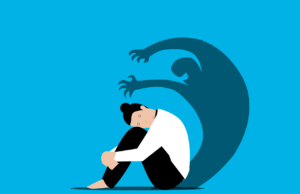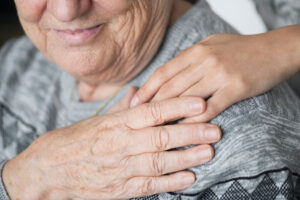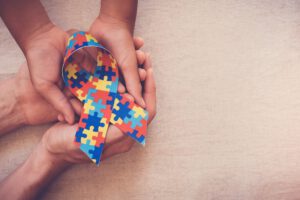
Social anxiety

Social anxiety (formerly called “social phobia”)
Social anxiety is not the same as shyness.
It is characterized by overwhelming anxiety and excessive self-consciousness in everyday social situations (e.g., school, work). For example, the person may fear and avoid public speaking, or go through it yet experience it as a taxing ordeal. One may fear being watched, evaluated and/or judged by others, and fear behaving in such a manner so as to feel embarrassed or humiliated. This anxiety may manifest in a variety of ways: blushing, sweating, trembling, nausea, inability to speak, increased heart rate. Worrying about experiencing these visible symptoms may exacerbate the social anxiety. Moreover, the person may exhibit a rigid body posture, maintain poor eye contact and speak quietly, or experience their mind going blank at a critical moment, such as during a presentation or lecture.
Generally speaking, although for many of us there is a continuum of dis-ease with certain social situations, if it interferes with functioning and lasts at least 6 months, a diagnosis of Social Anxiety Disorder (SAD) may be considered. Psychiatric manuals, such as the DSM-V and ICD-10 delineate specific criteria to be met.
Prevalence, Epidemiology and Comorbidity
It is thought that in the Western world, 7% of the population suffer from social anxiety disorder at any given time, and that 13% experience it during their lifetime. More common in girls, social anxiety usually first manifests in adolescence and early adulthood.
Like other phenomena, social anxiety is probably multidetermined, the result of various factors. Factors to consider include: environmental and familial factors, adverse experiences in childhood, and genetics. Parenting and the existence of parental pathology influence the mental health of the child.
Risk factors include parental traits and child-rearing practices such as parental control and overprotectiveness (which may deprive the child of opportunities to learn how to cope with certain situations), anxious parenting, cross-generational attachment difficulties, behavioral rigidity, lack of warmth, neglect and rejection, criticism and shame.
Some brain imaging patterns have been found to correlate with social anxiety and anxiety in general. Specifically, two areas in the brain have been singled out: the amygdala, a part of the limbic system involved in processing emotions, including fear, and the insula, which controls autonomic functions through the regulation of the sympathetic and parasympathetic systems, also having a role in regulating the immune system. These two areas work in concert with other systems and areas.
When, during the course of the critical developmental years, the child’s autonomous nervous system experiences overwhelm (e.g., not enough resources are available to process certain experiences), social anxiety may ensue.
Often, such a diagnosis is made in conjunction with another anxiety disorder (e.g., panic disorder) and/or a depressive disorder. Self-medication via recourse to alcohol and/or other substances may occur. While this may initially bring about short term relief, long term relief is best sought via professional treatment (whether CBT or another form of psychotherapy, or medication).
A few valuable tips to deal with social anxiety
1. The importance of breathing in self-regulation cannot be overly stressed.
Take a minute to attend to your breathing, making sure you breathe in enough air, noticing how your belly goes up and down, as your lungs expand and contract.
It is helpful to deliberately exhale more slowly than the previous inhaling of air.
2. A great toolkit to have at one’s disposal, is a five step first aid tool . Stemming from a body-mind approach (Somatic Experiencing or SE, for short), it relies on a type of somatically-informed mindfulness.
Developed by SE trainer, Gina Ross, and increasingly used in various countries, EmotionAid is currently the focus of research in Israel
EmotionAid is based on:
* resources
* mindfulness, self-focusing and awareness
* grounding
* discharge
A resource is anything that may allow you to feel stronger, calmer, better. It may be internal (e.g., a personal trait you have) or external (e.g., a person, activity or object). It is important to develop one’s resilience by learning to identify and enjoy one’s resources, while noticing their effect on the body.
Being inwardly focused and mindful of our ongoing experience in the present—without being critical or judgemental about it—allows us to be in touch with ourselves and our felt sense (Gendlin). One can attend to one’s thoughts, feelings, bodily sensations, behavior, and the images that may come to mind— in relation to what we are dealing with at that particular moment.
In the context of social anxiety, if one can develop curiosity about oneself and how one copes with new and unfamiliar situations/people, and learn to observe one’s thoughts, feelings and bodily sensations without necessarily acting upon them or judging them, this may help tremendously.
Grounding requires sensing the support the ground offers the soles of our feet and body, and may be enhanced by using the thinking brain (neocortex). Since this taxes our working memory, we are no longer in touch with our physical sensations at that moment, including those of anxiety. After feeling the support to your body, look around you, scan your environment, and count ten objects you see, whether made of different materials, or having the same color.
Discharge means letting go of trapped energy the body no longer needs.
Signs of discharge include: a spontaneous breath, a yawn, trembling, a
pleasant sweat, certain abdominal sounds.
3. In addition to the above ways to manage one’s feelings and responses, in our attempt to deal with social anxiety, another valuable tool is that of cognitive reframing—that is, viewing the situation through a different, more positive (and thus less negative) lens. For example, instead of “I did a terrible job”, perhaps, “I can learn from this experience and become better at it.”
Additional Reading
See articles on EmotionAid, Somatic Experiencing (SE) and resources.









